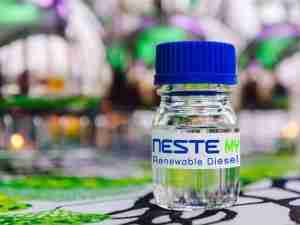U.S. Shale to Feed European Gas Market Battered by Winter
By: Anna Shiryaevskaya | Mar 24 2017 at 07:16 AM | International Trade
The heart of Europe’s gas market may finally get a helping hand from the American shale revolution as fuel is poised to cross the Atlantic to replenish depleted inventories after the coldest January in seven years.
Northwest Europe, one of the biggest trading regions for the fuel, hasn’t yet attracted any liquefied natural gas cargoes from the U.S., which the shale boom turned into the world’s biggest gas producer. So far, sellers have favored markets in South America and Asia where prices have been higher.
But that may be about to change with spring weather poised to damp demand and prices in the biggest consuming region of Japan and South Korea moving closer to those in the U.K. and the Netherlands. Supplies from the U.S. may arrive in the coming months to help replenish European stocks at their lowest level since 2013, according to Houston-based Cheniere Energy Inc., which is expanding its export plant in Louisiana.
“U.S. gas will find an obvious home in Europe once most other markets are filled up,” Trevor Sikorski, head of natural gas and carbon at Energy Aspects Ltd. in London, said by email. “There should be lots of gas as three trains should be operating for most of summer 2017” at Cheniere, he said.
As Asian demand subsides with milder weather, regional prices will move closer to parity with European rates, according to Energy Aspects.
The arbitrage for U.S. gas to both Europe and Asia is already “wide open,” Citigroup Inc. said in a report emailed Wednesday. Asian LNG prices may slide to below $5 per million British thermal units after May, according to the bank. That’s the price of summer gas in the U.K. on ICE Futures Europe in London.
“We are looking to sell into Europe in April-May as European storage sites start refilling, but we will only sell to Europe if we see it offers a price premium,” Eric Bensaude, Cheniere’s managing director of commercial operations, said by phone from London. “The main reason why we did not sell in Europe in the winter is because other markets were paying a higher price.”
Most U.S. LNG exports have so far gone to Latin America, with cargoes also reaching Asia and the Middle East. Supplies from Cheniere’s Sabine Pass have also arrived in Spain, Portugal, Italy and Turkey at an increasing rate over the past three months, according to London-based consultant Timera Energy, which counts BP Plc to Gazprom PJSC as clients. The company estimates that only 17 percent of U.S. LNG went to Europe since exports started in February 2016.
“After Latin America, Europe is the next cheapest destination for U.S. exports from a shipping cost perspective,” Timera said this month in a report. “As U.S. export volumes grow, significant volumes are likely to land in Europe, or to displace cargoes that flow to Europe from elsewhere.”
The third line, or train, at Sabine Pass has been approved for production and exports, while train 4 is near commissioning.
Cheniere’s marketing unit doesn’t have to pay the fixed fees the company charges companies with LNG supply contracts, including Royal Dutch Shell Plc. Such costs add to export prices of the fuel.
Still, insufficient differences between U.S. and European gas prices may keep those cargoes at “minimal quantities,” said Zach Allen, president of energy consultancy Pan Eurasian Enterprises in Raleigh, North Carolina, who’s tracked the LNG market for more than a decade.
Competition will also come from Russia and Norway. They produce gas at a lower cost than U.S LNG and ship it via pipelines instead of on tankers. Russia’s Gazprom is also targeting Europe’s low inventories to help it sell a record volume to its highest-paying consumer.
It takes about two weeks to transport a cargo from Sabine Pass to France and as long as a month to India. U.S cargoes have no restriction on final destination, which means that companies with several supply options can ship to markets with highest prices.
“This is the evolution for the LNG market, it ends up where it’s needed most, Steve Hill, executive vice president for gas and energy marketing and trading at Shell, told reporters on Feb 20. “If it’s in the U.K., that’s where it will come.”










